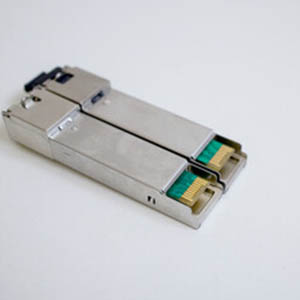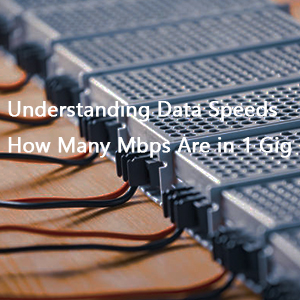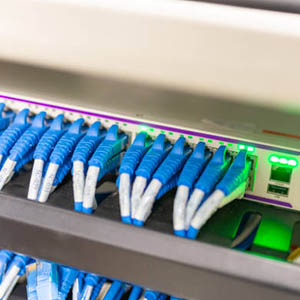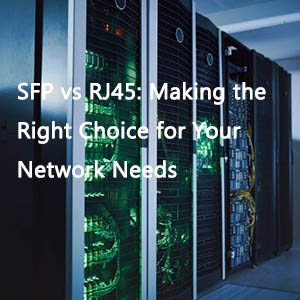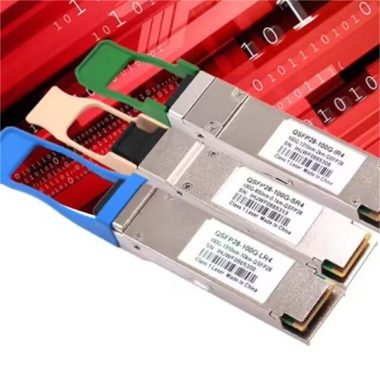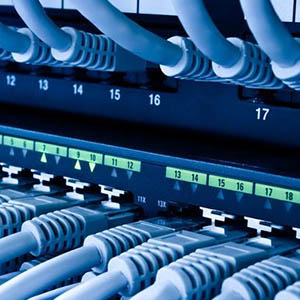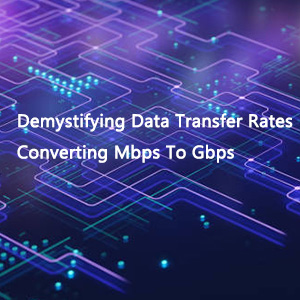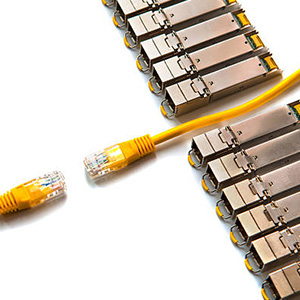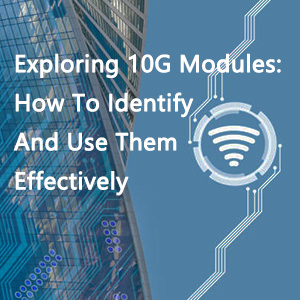In the realm of fiber optic communication, SFP, SFP+, SFP28, QSFP+, and QSFP28 are distinct types of transceivers that play crucial roles in connecting network devices like switches. These hot-pluggable optical modules are designed for seamless integration and operation. Let’s delve into the distinctions between these form factors and how they can be utilized effectively in various networking scenarios.

What Do They Represent?
To grasp the differences among SFP, SFP+, SFP28, QSFP+, and QSFP28, it’s essential to understand their respective roles and specifications.
- SFP: Introduced in 2001, SFP (Small Form-factor Pluggable) was designed to replace the bulky GBIC and support data rates up to 1 Gbps. As bandwidth demands increase, particularly with the advent of 5G and IoT, the 1G SFP modules are expected to phase out, though they still hold some market presence.
- SFP+: Launched in 2006, SFP+ is an enhanced version of SFP, capable of supporting data rates up to 10 Gbps. It remains a dominant format in the industry, with transmission capabilities ranging from 8Gbps to 16Gbps over distances from 30m to 120km. SFP+ transceivers are available in various connector types, including LC Duplex, LC Simplex, and RJ45.
- SFP28: Introduced in 2014, SFP28 maintains the same physical dimensions as SFP and SFP+ but is designed for higher transmission rates of up to 25Gbps. It is primarily used for 25G Ethernet and 100G (4x25Gbps) Ethernet applications.
- QSFP+: Debuted in 2012, QSFP+ (Enhanced Quad Small Form-factor Pluggable) comprises four channels, each operating at 10Gb/s, supporting both LC duplex and MPO-12 fiber connectors.
- QSFP28: Also introduced in 2014, QSFP28 shares the same physical dimensions as QSFP+ but utilizes four lanes, each at 25Gbps. It has become the standard interface for 100G applications.
| Optics Type | Standard | Data Rate | Wavelength | Fiber Type | Max Distance | Typical Connector | DOM | Operating Temperature |
|---|---|---|---|---|---|---|---|---|
| SFP | SFP MSA | 155Mbps 622Mbps 1.25Gbps 2.125Gbps 2.5Gbps 3Gbps 4.25Gbps | 850nm 1310nm 1550nm CWDM DWDM BIDI | OM1 OM2 OS1 OS2 | 160km | LC SC RJ-45 | NO or YES | CommercialIndustrial |
| SFP+ | IEE802.3ae SFF-8431 SFF-8432 | 6Gbps 8.5Gbps 10Gbps | 850nm 1310nm 1550nm CWDM DWDM BIDI Tunable Copper | OM3 OM4 OS1 OS2 | 120km | LC RJ-45 | YES | CommercialIndustrial |
| QSFP+ | IEEE 802.3ba QSFP+ MSA SFF-8436 SFF-8636 Infiniband 40G QDR | 41.2Gbps | 850nm 1310nm 832-918nm | OM3 OM4 OS1 OS2 | 40km | LC MTP/MPO | YES | CommercialIndustrial |
| SFP28 | IEEE 802.3by SFP28 MSA SFF-8472 SFF-8432 | 25.78Gbps | 850nm 1310nm | OM3 OM4 OS1 OS2 | 10km | LC | YES | CommercialIndustrial |
| QSFP28 | IEEE 802.3bm QSFP28 MSA SFF-8665 SFF-8636 | 103Gbps 112Gbps | 850nm 1310nm CWDM4 | OM3 OM4 OS1 OS2 | 80km | LC MTP/MPO-12 | YES | CommercialIndustrial |
Comparative Analysis
- SFP vs. SFP+: While they share the same size, their speeds and compatibility differ. SFP+ is utilized in 10-Gigabit Ethernet applications, whereas SFP is suited for 100BASE or 1000BASE applications. SFP adheres to IEEE802.3 and SFF-8472 standards, while SFP+ is based on SFF-8431. SFP+ ports can accommodate SFP optics but will operate at a reduced speed of 1 Gbps. Conversely, an SFP+ transceiver cannot be inserted into an SFP port without risking damage to the device or port. Typically, SFP+ is more costly than SFP.
- SFP+ vs. SFP28: SFP+ is primarily associated with 10G connections, while SFP28 is linked with 25G connections. They share the same form factor, and the pinouts of SFP28 and SFP+ connectors are mating compatible. SFP28 will operate with SFP+ optics but at a reduced speed of 10 Gbps. If a network switch’s SFP28 port can be configured for 10G transmission, 10G SFP+ modules will function correctly; otherwise, they will not.
- SFP+ vs. QSFP+: The primary distinction lies in the quad form. QSFP+ supports four 10 Gbit/s channels, enabling 10-Gigabit Ethernet, 10G Fiber Channel, or InfiniBand, which facilitates a more efficient stacking and networking design. QSFP+ can replace four standard SFP+ transceivers, leading to greater port density and potential cost savings over SFP+.
- SFP28 vs. QSFP28: These transceivers operate on different principles. SFP28 supports a single channel at 25 Gbit/s, whereas QSFP28 supports four separate lanes, each at 25 Gbit/s. Both are applicable in 100G networks, but SFP28 is often used in conjunction with QSFP28 in breakout
The evolution of optical transceivers is driven by the need for higher bandwidth rates in smaller form factors. In today’s dense networks, compact form factors are indispensable. Understanding the nuances of SFP, SFP+, SFP28, QSFP+, and QSFP28 is crucial. Additionally, considering network traffic, transmission distance, and future-proofing requirements will ensure the appropriate selection for your networking needs.

